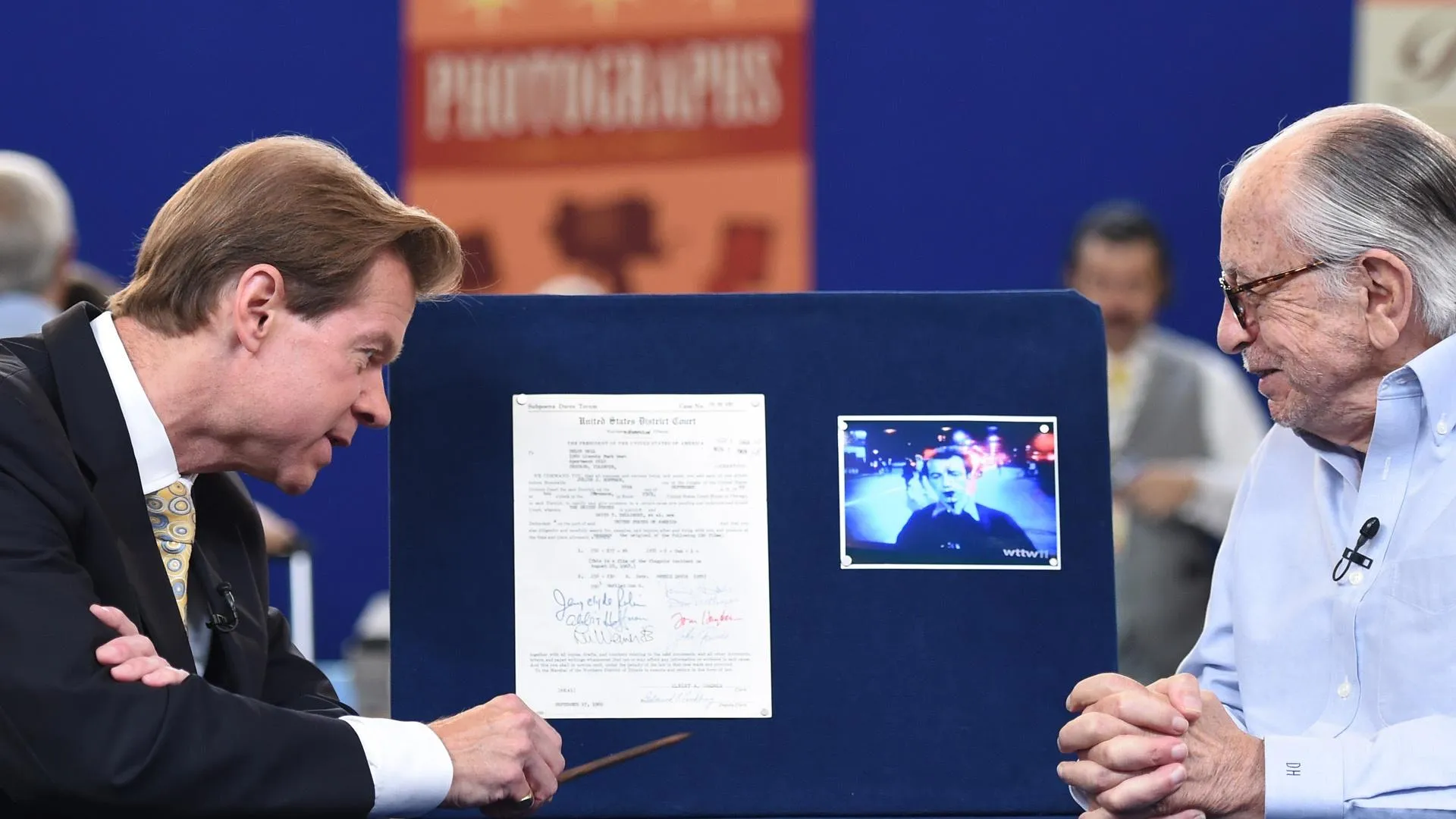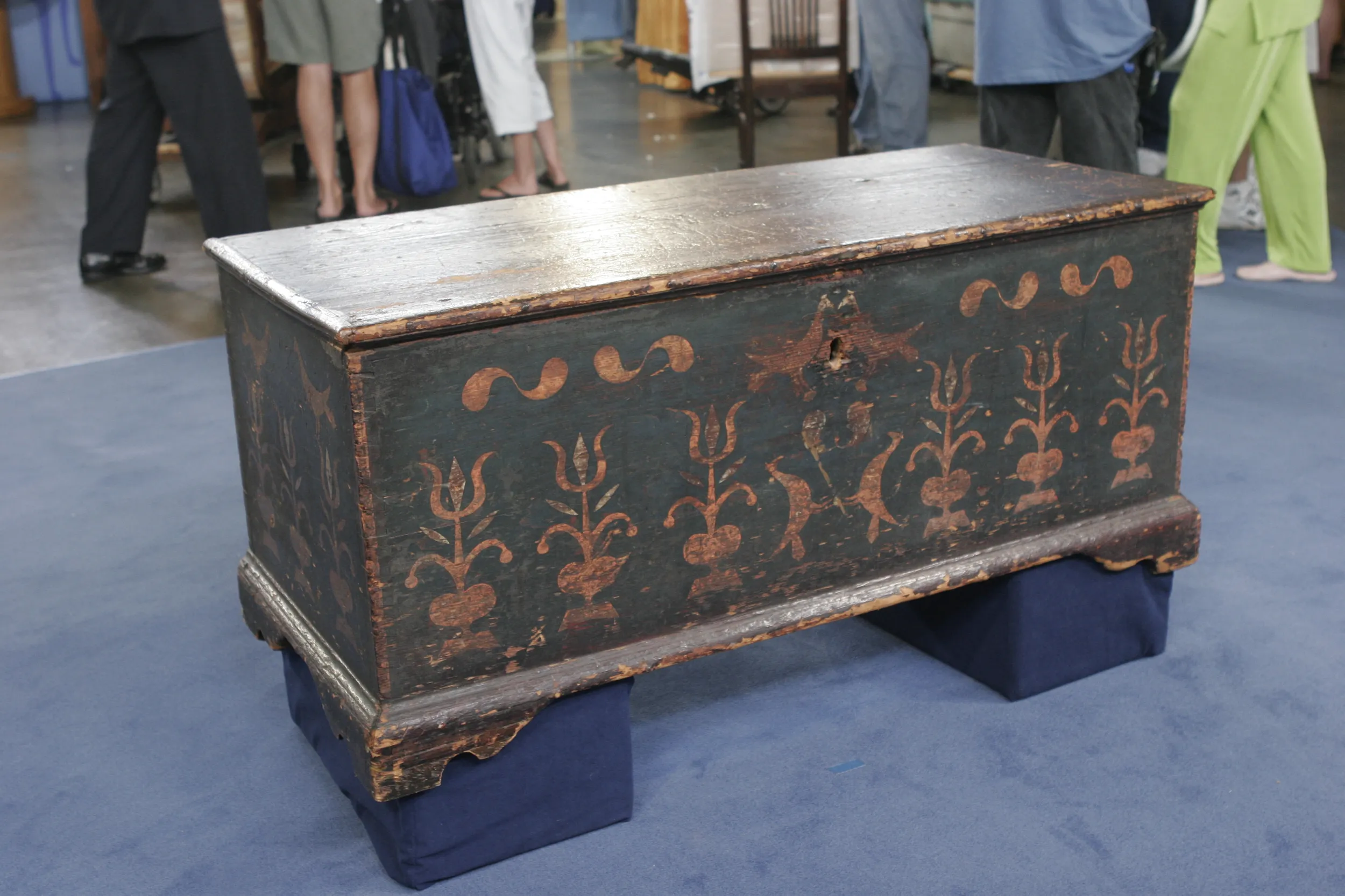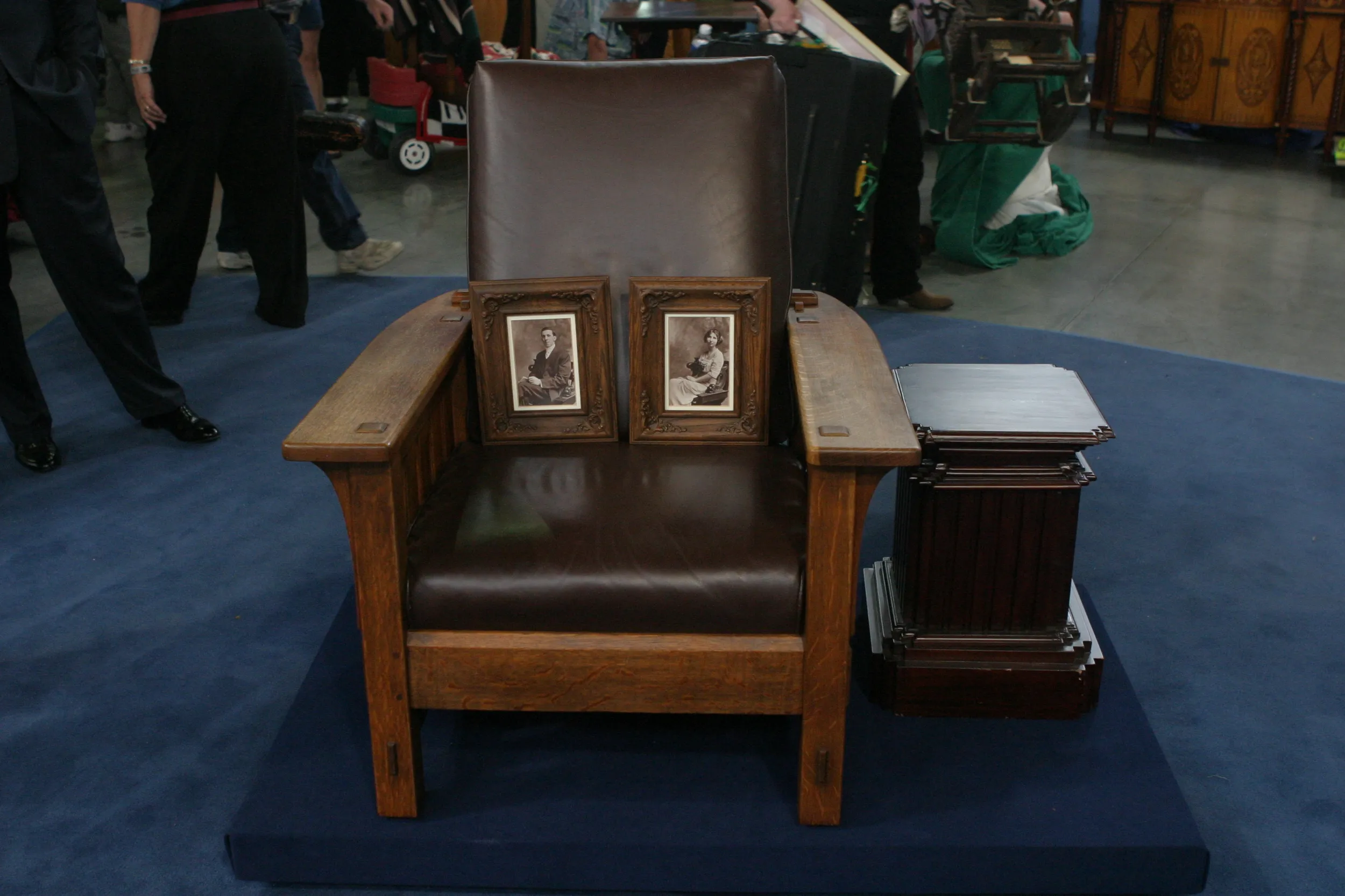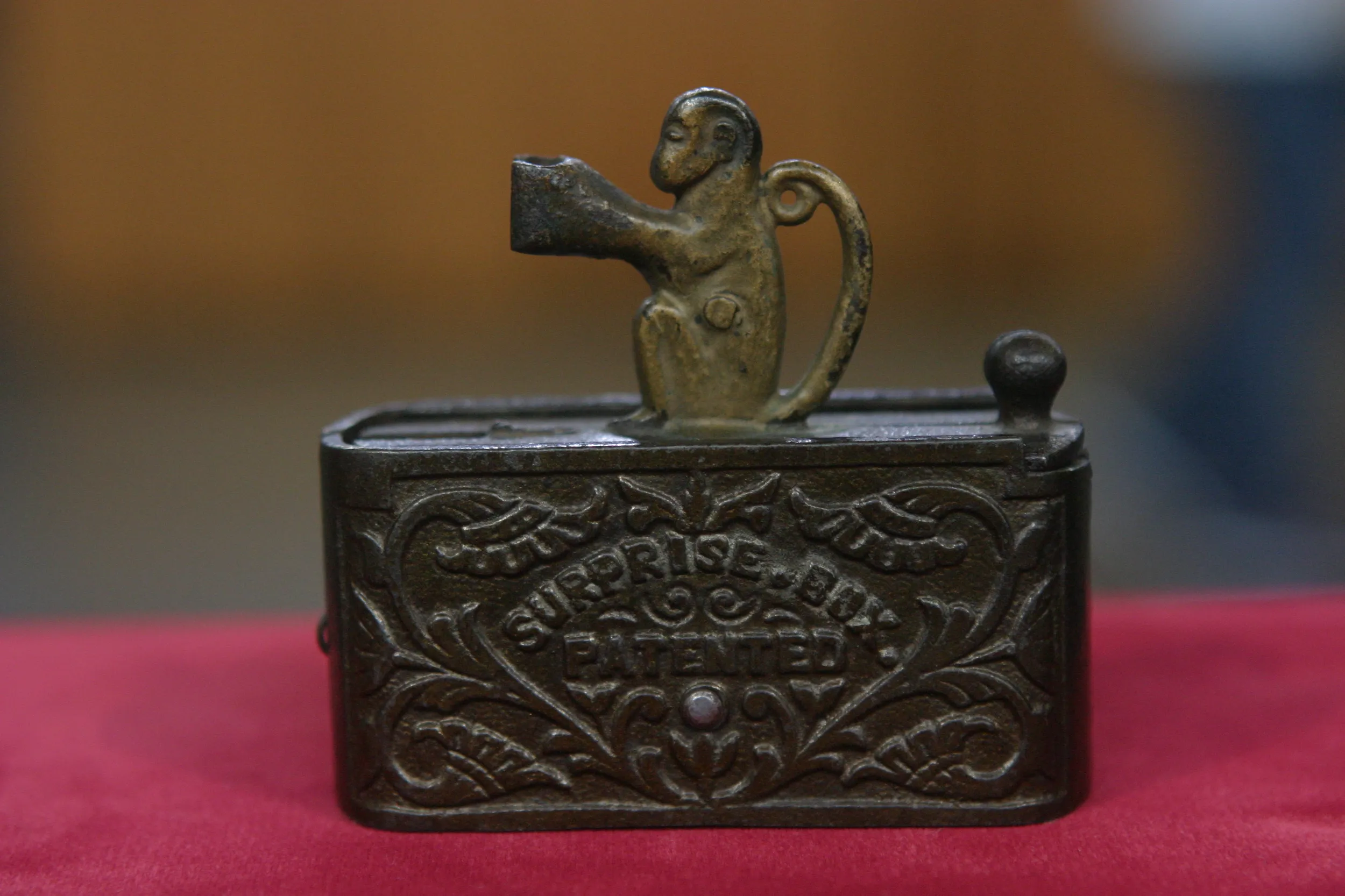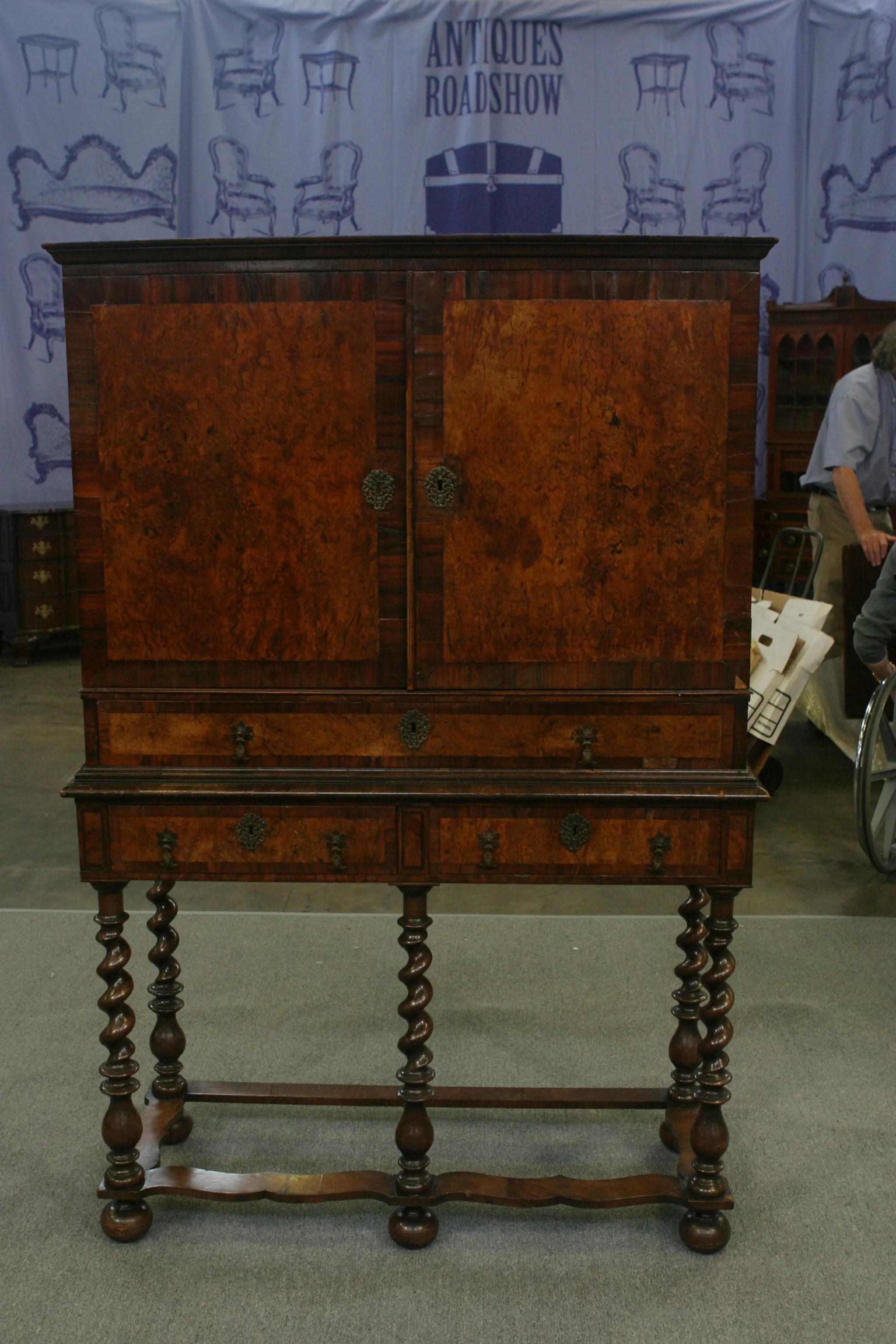APPRAISER: Tell me how you got this sideboard.
GUEST: Well, it took years of working on an artist friend of mine. I used to tell her I wanted to buy it, and she'd laugh, and this went on for several years, and finally she did let me buy it. I bought it in 1999. She had bought it many years before that, from an importer. I believe it came from England. And I believe it was from around the 1870s. At the time, she did give me a book that identified a piece that was very similar. She had it in a living room, and being an artist, it was really great to show a lot of her sculptures and it was just the perfect backdrop.
APPRAISER: I guess my job's done here.
GUEST: (laughing) No, I want to know more!
APPRAISER: We know that it's English, but they did make things like this in the United States also. This is an Aesthetic Movement cabinet, sideboard, and you're absolutely right on with the thing being from the 1870s. Furniture, of course, was always made to serve a function, but in this time period, there was a huge interest in all things "Oriental." This finish, most people in the trade would refer to it as an ebonized finish, because it's black, but it was really sort of an emulation of japanning, which is layers of lacquer like they did in China and Japan on furniture. And the other thing that they did was they used a lot of naturalistic elements. You see flowers, you see geometric lines, and the whole thing has sort of an Orientalist feel. The design of the door panels, the contrasting use of veneers. Like this is a bird's-eye maple. This created a wonderful backdrop for little objects of art. Just a fabulous time period in decorative arts. This would have been made in a factory, and chances are if you saw a reference to this in a book, that was the piece that was originally designed and made. This one would be a step back, but still a very fine piece. What did you pay for it?
GUEST: $1,500.
APPRAISER: Well, I got good news for you. Even though things like this have suffered somewhat in the past few years, just the way the market has been, I think today, an insurance value on this would be at least $3,000.
GUEST: That's great.

